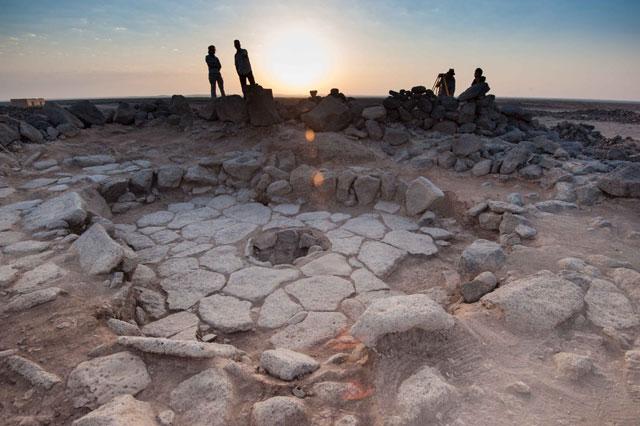You are here
Archaeologist explores ancient sedentary communities in northeastern Jordan
By Saeb Rawashdeh - Sep 28,2017 - Last updated at Sep 28,2017
AMMAN — By the end of the last Ice Age, hunter-gatherers in southwest Asia who belonged to the Natufian culture (12,500 to 9,500BC), established the first sedentary communities, according to a scholar from the University of Copenhagen
Due to the wet and warm climate in the Levant, hunter-gatherers enjoyed abundant plant and animal resources. They were known as some of the first hunter-gatherers in the world who settled in semi-permanent settlements, scholar Lisa Yeomans explained.
“Archaeologists are still debating the reason for the shift to agriculture. This is one of the reasons we are trying to better understand the impact of climate on the landscape and resource availability,” Yeomans told The Jordan Times in an e-mail interview.
Yeomans, who received her PhD from University College London in 2006 and worked on excavations in Jordan, Egypt, Turkey, and Qatar has joined the Shubayqa Project (in Black Desert, northeastern Jordan) directed by Tobias Richter from the University of Copenhagen.
The team of experts has been analysing faunal remains, she said, noting that “the animal bone was collected by the careful sieving of archaeological sediments and exported to Copenhagen where comparison with the reference collections at the Zoological Museum allowed identification”.
Initial results from the analysis of the animal bone at Shubaqya 1 showed that, in the Early and Late Natufian periods, there was extensive hunting of wintering and migratory wetland birds, indicating the presence of a seasonal if not a year-round lake close to the site, she said.
Additionally, hunting of gazelle was common as the environment was capable of sustaining a large population of animals, Yeomans explained, noting that wild sheep, hare, fox and onager were also hunted.
“There is evidence that the environment was becoming drier and impacting the resources available in the later part of the sequence, but the hunter-foragers were able to amend their hunting focus, enabling continued occupation,” the archaeologist underlined.
The team of scientists also tried to determine when the climate change occurred. “Climatic fluctuations were pronounced at the end of the Pleistocene Epoch [ending around 11,700 years ago] but the influence on the environment is hard to document,” Yeomans stressed, adding “we are working to better understand the effects of the climate change on the landscape in this period before the prevailing warm climatic conditions of the Holocene Epoch [started approximately 11,700 years ago].”
“The team is also studying, among other artefacts, the Natufian assemblages of ground stone, lithics, botanical and human remains from the site,” the scholar noted.
In the upcoming period, the University of Copenhagen plans to continue its research in the Black Desert. “We are now working at the nearby site of Shubayqa 6 dated to the PPNA and early PPNB periods,” Yeomans stated.
The ongoing work of the archaeological team aims to offer an “unprecedented insight” into the last hunter-gatherers and the first farmers in the desert zone of eastern Jordan, and to gain a better understanding of the economic, environmental and social factors that contributed to the transition to agriculture, the expert concluded.
Related Articles
AMMAN — The remnants of 14,000-year-old bread were found at an archaeological site called Shubayqa 1 site in north-eastern Jordan.The schola
AMMAN — Shubayqa, a site located some 130 kilometres northeast of Amman, represents a hunter-gatherer spot and as such it draws attention of
AMMAN — Excavations at Shubayqa 1 — a hunter-gatherer site dated to between 14,600 to 11,700 years old — by a team of archaeologists from th














